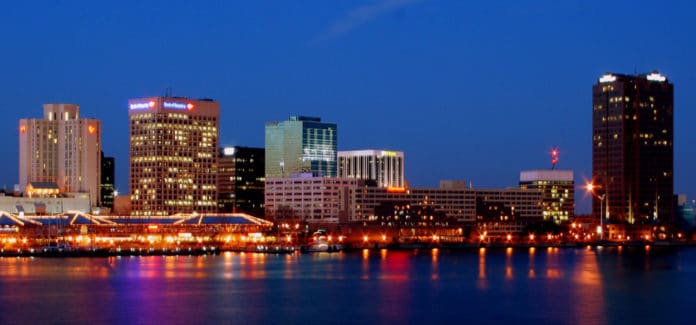
What does a new restaurant have to do with golf carts? In Virginia, Norfolk’s city council in an 8-0 vote appear to have done the math and come up with an answer: If residents drive golf carts, they can park more vehicles on the street than people who drive cars. As such, the vote that expanded the roads golf carts can use in the city could mean more business for local restaurants and other businesses.
East Ocean View Civic League President Ann Bolen had already done the math before the vote, according to the ABC 13 News Now program. “Parking is an issue on any beach community and here in East Ocean View,” she told a reporter.
Bolen was among those in favor of the expanded rights for golf cart drivers, noting that it would be good for the new restaurants in the extended range for carts, which are still restricted to roads with speed limits of 25 miles per hour or less.
Norfolk city council members voted unanimously to allow golf carts to go south of Ocean View Avenue to the Little Creek Inlet in a section between First and Twenty-third Bay Street.
Golf carts were already allowed on the East Beach section of Ocean View.
The second major caveat for golf cart owners in the city is the mandate that each cart carry liability insurance of $100,000 to cover personal injuries and $20,000 to cover property damage.
One local golf cart owner, Bill Clifford, was quoted as stating that golf carts are “cool” and “fun.” “It’s a lot easier to ride around in your golf cart than it is your bicycle or car, and we tend to hang around with golf carts,” he said.
Another caveat for the new law is the mandate that local police find a way to educate local residents about the laws concerning golf carts in the city.
That said, one quick questions arises: If golf carts allow for more vehicles to park on a city street than cars, will they actually bring more people to local businesses or less? After all, cars can haul more riders than a golf cart, but you can certainly park more golf carts on a street or in a parking garage.
The answer to that question would certainly touch on the points that golf carts for residential use often have a second seat and cars in the U.S. car culture often include only one or two passengers at a time, anyway, with their roomy back seats vacant most of the time.
A major study would be handy to answer that question, especially so if economics were included. After all, various infrastructure – like parking garages – are designed for cars and might not fit more golf carts unless changes were made in their configurations.
However, if golf carts actually brought in more revenue to downtown areas, you can probably imagine the quick response throughout the nation of retail associations asking their local authorities to consider greater allowances for golf carts.







